The Life Of Buddha Narrated In Traditional Thangka Paintings
The thangka paintings of the Life of Buddha narrates the most relevant episodes of the life of Siddhartha known as the “Twelve Great Deeds of the Buddha’s Life”.
These artworks are not meant to be just an illustration of the main events of the historical Buddha, but they are considered to be a visual representation of several philosophical aspects of the Buddhism, especially the progress towards the achievement of spiritual enlightenment.
Using as a reference one of the most beautiful masterpiece in our collection, we will explore in this article the twelve topic events of the life of Siddhartha Gautama that can be divided in three distinct phases:
– His descent on earth, the birth and the young years as a prince.
– The realization of human suffering and his quest for a solution to overcome his suffering.
– The fulfillment of his search and his commitment to spend the rest of his life teaching others how to achieve enlightenment for themselves.
1. Buddha’s promise to descend on earth.
According to the Buddhist cosmogony the universe and all dimensions of the existence are divided in six different realms depicted in another important thangka painting: the Wheel of Life.
Before the Buddha was born into this world as Shakyamuni, he was a bodhisattva in the Tushita heaven, home of the contented gods.
As a prime example of bodhisatva, moved by compassion against the human realm, Buddha decides to manifest himself in this reality with the intention to teach the Dharma and save people from spiritual misery and suffering.
This episode is represented by the Buddha, surrounded by other divinities, making his promise holding a golden bowl (in some cases a lotus flower) symbol of the purity of his intention.
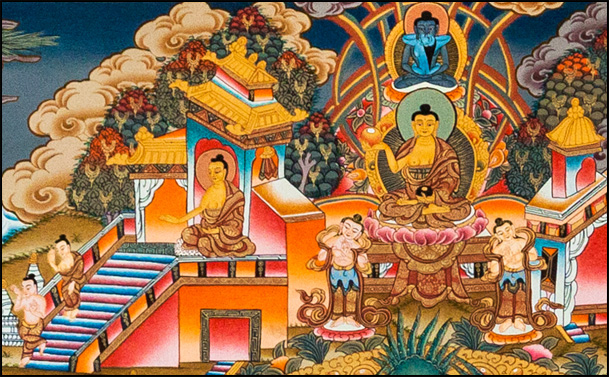
Buddha in heaven and his descent on earth
Thus, Buddha, looking down upon the sentient beings suffering and, in accordance with his bodhisattva status, decided to descend to the earth and spread the word of Dharma.
2. Mayadevi’s Dream.
Buddha’s descent to this world is represented by his mother, the princess Maya Devi, dreaming a white elephant.
The legend says that during one night of full moon, Maya Devi dreamed to be taken by four devas (spirits) to a lake in the Himalaya. There she encountered a white elephant that ripped the right side of her belly with his tusks.
Finally the elephant disappeared and the queen awoke, knowing that she had been delivered an important message, as the elephant is a symbol of greatness in Nepal.
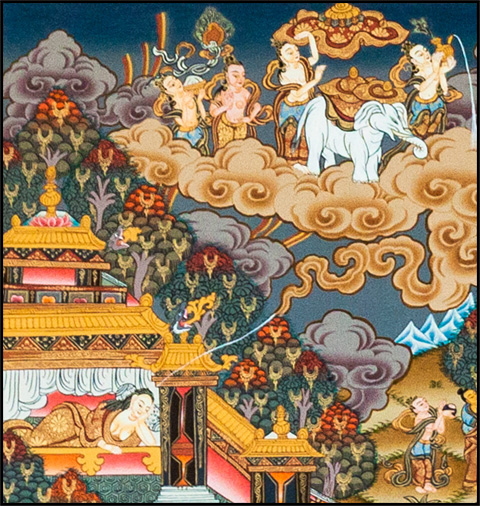
Princess Mayadevi dreaming the white elephant
The elephant is also symbol of strength and intelligence and his color is associated to the gray clouds that carry the rain able to give life to the soil. So the white elephant, in this allegory, is an emblem of fertility and at same time of immaculacy.
3. The Birth of Buddha.
After ten months of pregnancy Maya Devi went to her father’s kingdom and deliver the baby with the assistance of her mother. However on the way to her childhood home, she decides to stop in a beautiful garden in Lumbini and take a rest underneath a blossoming sala tree.
The story says that Buddha was born from her mother’s right side while she was standing grasping a branch of the tree.
This peculiar position assumed by Maya Devi influenced the female iconography all over Asia. The sinuous gesture is been adopted by traditional dance choreographic and inspired several generations of artists.
The depiction of the event also shows the presence of the Hindu gods Indra and Brahma at the time of birth.
Buddha was immediately able to walk. In fact he took seven steps forward and at each step a lotus flower appeared on the ground.
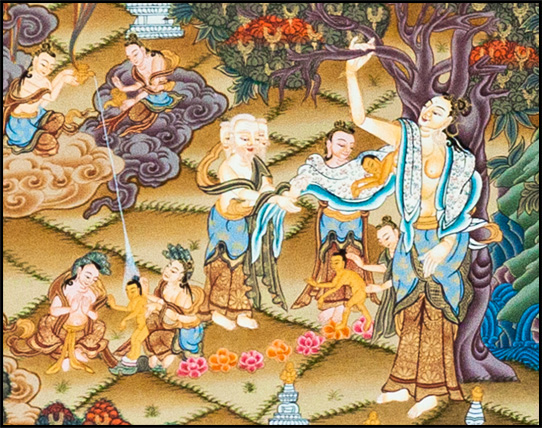
The birth of Buddha
He was named Siddhartha Gautama. In Sanskrit Siddhartha means ” the One who achieves his goal”.
The princess Maya Devi will die seven days after Buddha was born.
4. Buddha’s early years and his wordly life.
Little is known about the early life of prince Siddhartha.
Because his father had been warned that the boy might abandon his palace and his royal destiny to follow a spiritual path, the young Siddhartha lived a comfortable and sheltered life. He received the finest education and mastered all lessons taught to him. In his younger years he also excelled in sports, particularly riding the horse and with the bow.
He had the reputation to be also physically extraordinary attractive.
When he came of age and assumed royal duties, prince Siddhartha became a true man of the world and had a retinue of many queens and attendant ladies.
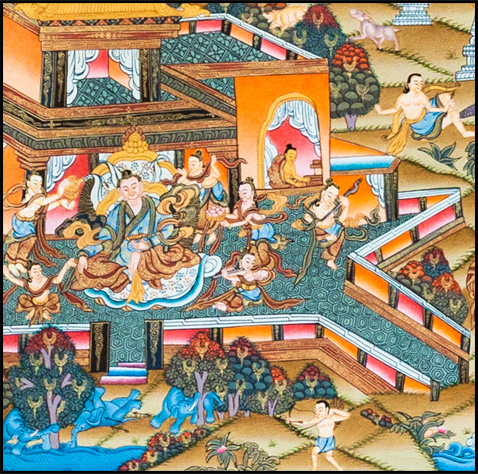
Young prince Siddhartha in the palace
In the second part we explore the episodes that led Siddhartha to start his ascetic life and his quest for a solution to human suffering.

Leave a Reply
You must be logged in to post a comment.
How To Order
- Browse our catalog and choose your favorite design.
- Select your preferred size and quality to check the price.
- Click on “Product Inquiry” to send us a message and we will check if we the artwork is immediately available. If not we will make it for you.
- Use the cart page to calculate the shipping cost by selecting your country.
- Once we receive your order we will start creating the artwork according to your preferences and provide you with updates and images upon your request.
We strive to ensure a smooth shopping experience with our assistance. We also welcome commissions of custom designs of thangkas, masks and mandalas.
Shipping and Payments
We offer trusted shipping options to ensure your purchases arrive in perfect condition, and delivered in 5 to 10 working days worldwide. We accept PayPal, debit/credit cards and bank wire transfer services.
About Our Community
We live in Changunarayan, a UNESCO heritage site located on a forested hill overlooking Bhaktapur and the Kathmandu valley. You are welcome to visit our art school and meet our community of artists and artisans.
Learn More About Our Thangka School And Workshops
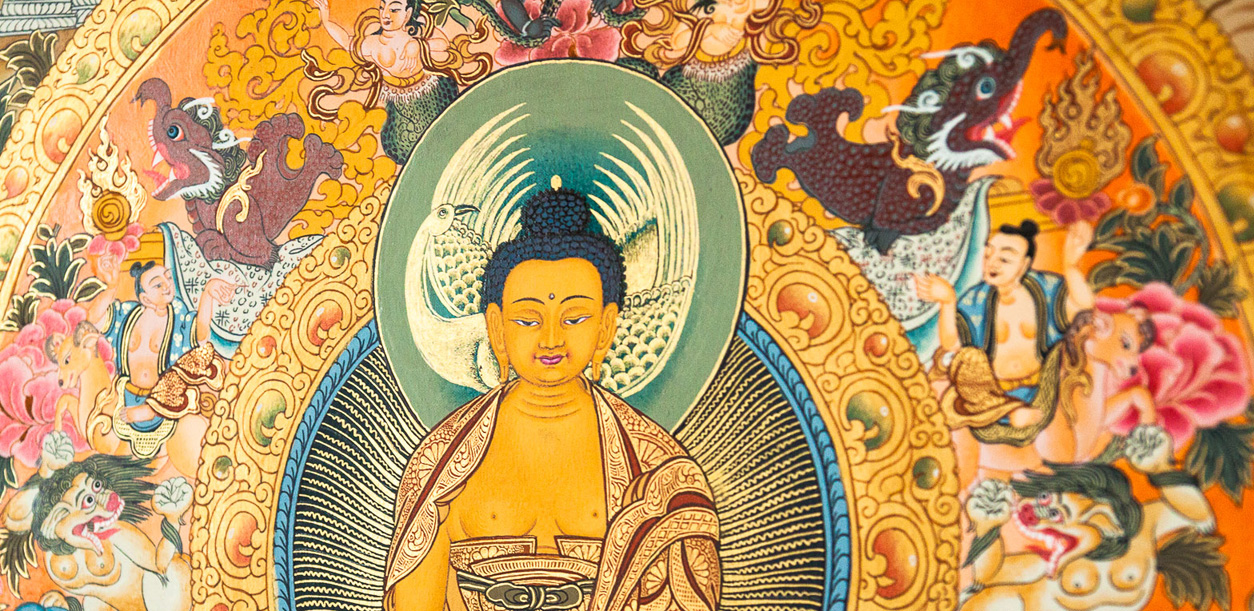
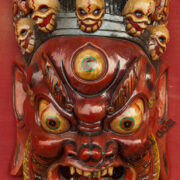 Red Mahakala Mask
Red Mahakala Mask 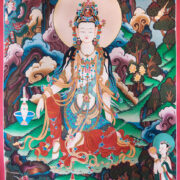 Quan Yin Thangka
Quan Yin Thangka 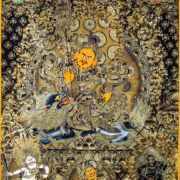 Five Jambhala Thangka
Five Jambhala Thangka 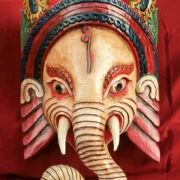 Ganesh Mask Design #01
Ganesh Mask Design #01 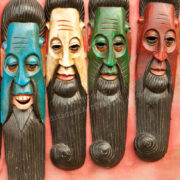 Sadhu Baba Masks
Sadhu Baba Masks  Universe Om Mandala
Universe Om Mandala 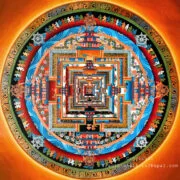 Kalachakra Mandala
Kalachakra Mandala 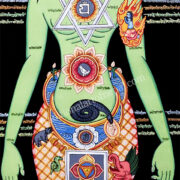 Chakraman Yogi
Chakraman Yogi 
One Response to The Life Of Buddha Narrated In Traditional Thangka Paintings